Pentax K1000 Camera: 35mm Kit
Original price was: $300.00.$268.28Current price is: $268.28.
Pentax K1000 Camera – A timeless 35mm SLR celebrated for its simplicity, durability, and outstanding image quality. Perfect for beginners and professionals alike, this manual camera offers full creative control and delivers sharp, vibrant results with every shot.
How to Use a Pentax K-1000 35mm Film Camera
The Pentax K1000 35mm single-lens reflex camera was introduced in 1976, the same year that Canon introduced the industry-changing AE-1. While the Canon AE-1 (opens in new tab) introduced a number of significant technological advancements, the K1000 was essentially a fully mechanical single-lens reflex camera. Incredibly, it was still being manufactured in 1997, albeit in China as opposed to Japan where it had previously been produced (while it was also made in Hong Kong for a time as well). Pentax was successful in selling millions of K1000s over the course of the camera's production run. While it's true that the K1000 lacked any particularly noteworthy characteristics, the camera's widespread appeal stemmed from the fact that it was uncomplicated and straightforward to operate, inexpensive, and compatible with a wide variety of lenses.
The Specifications of the Pentax K1000
- Film format: 35mm camera type SLR
- Lens mount: Pentax K
- Exposure control: Manual
- Shutter speeds range from mechanical 1/1000 of a second to one second, in addition to bulb.
- Metering for exposure using a center-weighted average
- Two 1.55V SR44 batteries or two 1.5V LR44 batteries serve as the battery.
- Dimensions: 143x 91 x 48mm
- Weight: 620g
The K1000 from Pentax features a shutter mechanism that is entirely mechanical, demonstrating the company's commitment to keeping things uncomplicated. This meant that you could happily fire the shutter without any batteries (just like the Nikon FM2 that was released in 1982), with the K1000 requiring only a couple of SR or LR44 batteries to power the metering system. This was similar to the Nikon FM2 that was released in 1982. When it comes to metering, the K1000 takes into account the entirety of the scene before settling on an exposure. However, it is important to keep in mind that the meter on the K1000 does not turn off by itself. In order to prevent the battery from being drained unnecessarily, you will need to replace the lens cap before anything else. The flash sync was rated at a modest 1/60 second, while there is also a PC sync socket included in the camera. The maximum shutter speed that could be used was an unremarkable 1/1000 second. The K mount, which has been in use by the company for quite some time, is integrated into the Pentax K1000, which gives owners access to a vast selection of lenses. Even some of Pentax's more recent autofocus lenses will attach to the K1000 and can be used happily in manual focus. However, Pentax's more recent lenses that do not have an aperture ring will not offer any exposure control and will not be compatible with the K1000.
The construction and operation of the Pentax K1000
The more recent Pentax K1000 SE model
The top and bottom plates of the original Pentax K1000 were made of satin-chromed brass, and the film rewind assembly was made of aluminum and steel. However, the quality of the materials used in the camera's construction degraded over the course of its production run, and by the time it was being manufactured in China, a significant number of its components were made of plastic. As a result, the total weight decreased from 620 grams to 525 grams over the course of its lifetime. You can probably guess that the original Japanese-made models are the cameras that are the most sought after because of their durability. If the name "Asahi" is still printed on the pentaprism, then the model in question is likely an older one. This branding was phased out as production moved outside of Japan. However, there is a good chance that you are looking at an earlier model. Even though it has such a limited set of features, the K1000 is nice and straightforward to use. However, those coming from cameras that automate everything will find the K1000's fully manual exposure mode to be a bit of a culture shock. The Pentax K1000 SE (and upgraded model) featured a split-image in the center of the viewfinder, but the focusing is done using a microprism spot in the center of the viewfinder, which is not the easiest thing to get used to.
Are you considering purchasing a Pentax K1000?
The cost of purchasing a Pentax K1000 will vary depending on which generation of the K1000 you are interested in purchasing; however, the more desirable earlier versions will cost you approximately $200 when paired with a 50mm f/2 prime lens. It might not have some of the more advanced features that some of the other cameras available at the time did have, but the fact that it had a more streamlined and straightforward approach contributed to the product's overall success. Because it was such a user-friendly single-lens reflex camera (SLR), the Pentax K1000 helped tens of millions of people get their feet wet in photography. For that accomplishment, it deserves praise.
Pentax k1000 Review And Guide
In this review of the Pentax K1000, we take a deep dive into this mechanical workhorse to discover why it is the camera of choice for film photography educational institutions. In 1976, Pentax presented the world with its first film camera, the K1000, which featured interchangeable lenses. When it was first introduced, the Pentax K1000 was not at all intended to be positioned as a flagship model of any kind. Pentax, in point of fact, did very little in the way of advertising and promotion for this camera. But despite this, the K1000 was an enormous commercial success [1]. Because it was so well received, production of the camera continued until 1997; during those 21 years, approximately 3 million units were distributed to satisfied customers. Do you find that impressive? The camera's popularity was largely fueled by a number of factors, the most important of which were its rugged and dependable construction, its affordable price, and its straightforward usability. The Pentax K1000 was an excellent choice for students learning photography due to the aforementioned reasons, and it was recommended that they make this purchase. In today's market, the Pentax K1000 can be an excellent option for you if you are a novice photographer or an amateur who is interested in experimenting with film photography.
Who is the target audience for the Pentax K1000?
The ease of use of the Pentax K1000 was one of the characteristics that set it apart from other cameras, as I mentioned earlier. When you're using the camera, it feels like there's no way anything could possibly go wrong. To tell you the truth, the camera doesn't come with any fancy extras that you can show off. The operation of it is very easy to understand. Because of its easy-to-understand nature, it is an excellent option for novices. It frees your mind to focus on the one thing that really matters, which in this case is taking pictures. Therefore, if you are a person who is completely new to photography and would like to get started with film media, the Pentax K1000 is an excellent choice for beginners as it is a camera that is designed specifically with novices in mind. Or, if you are experienced with digital photography but would like to learn more about the characteristics of film, the K1000 [2] is once again an excellent option for you to consider.
Design and construction excellence
Even though Pentax designed the K1000 with novice photographers in mind, the company did not skimp on the quality of the camera's design or construction in any way. Because it is entirely constructed of metal, the body is quite heavy for its size. The construction of the camera screams out for quality and has a very sturdy feel to it. The gradual advancement of the film guarantees the high standard of the internal components, and the uncomplicated design ensures that everything of significance is situated in the appropriate location. On the left is the knob for winding the film, and on the right is the dial for adjusting the shutter speed, the lever for advancing the film, and the button that releases the shutter. The dials, buttons, and levers are all positioned exactly where they should be for optimal operation. That's how good it is.
Focus
The K1000 does not come equipped with an autofocus function of its own. You will be required to manually focus, and the 0.88x viewfinder does a respectable job of allowing you to see clearly for the purpose of doing so. In addition, there is a micro prism spot located at the center of the lens that functions as a focusing aid to assist you in ensuring that the image you are viewing is sharp.
Metering
It's possible that the fact that the Pentax K1000 doesn't have a lot of fancy metering systems is due to the fact that it was designed with beginners in mind. A TTL average metering system is included with the purchase of this item. Consider it to be similar to the matrix metering system found in modern cameras, albeit one that is not as advanced. This system takes into account the luminosity across the entirety of the frame and calculates an average value to determine the exposure that the camera believes to be appropriate. When you look through the viewfinder, you will notice that there is a needle on the side of the camera that moves either up or down to indicate whether or not the image is overexposed or underexposed, respectively. If you adjust the settings on the camera so that it points somewhere in the middle, you will achieve an exposure that is satisfactory. This metering system fails miserably, however, in situations with complicated lighting, such as when the subject is being backlit. In circumstances like these, you will consequently be required to use your best judgment. Keep in mind that the light meter is the only component of the camera that is powered by the battery that you use to power the camera. Therefore, in order to stop the drain on the camera's battery, make sure the lens cap is always on the camera whenever it is not being used. Be aware that there is no auto-exposure mode built into the device, if that is something you normally use your camera for. Because of this, you will be responsible for determining the exposure all by yourself. Despite the drawback, I favor taking this approach. It requires a lot of effort on your part to get the exposure just right.
Pentax k1000 lenses
Lenses
The bayonet lens mount used by the Pentax K-mount system is featured on the Pentax K1000 digital camera. Because of this, you will have access to a wide variety of lenses with a K-mount, giving you more options than ever before. The SMC Pentax 35mm f/2 lens is without a doubt my favorite lens because of the fantastic image quality it produces and the excellent control it affords. The lens creates images that have superior contrast, which is unmatched by any other lens in its class, and excellent sharpness. The K1000 is capable of working with both the native K-mount system as well as the M42 mount, which is a screw thread mount system. Both of these mounts are supported. On the other hand, you will need to make a separate purchase of an M42 to K-mount converter, which is not very expensive and is widely available. Because converters typically result in a degradation of the image quality, the native K-mount lenses are the ones that I personally prefer to use.
Utilizing the Pentax K1000 in one's work
Working with the K1000 is a piece of cake, as I've mentioned on multiple occasions, and I won't stop saying it now. Because there is no unnecessary clutter in the design, and the layout is straightforward, everything is very easy to understand. After loading the film, setting the ISO, and double-checking the metering, you can go ahead and take the picture. You may also be interested in reading our article titled "How to Load Film" which can be found here. Because of how simple it is to use, you won't have to waste time trying to figure out how to operate the camera; instead, you can focus on getting the perfect shot. Activating the camera is as easy as removing the lens cap thanks to how straightforward the process is. Simply ideal for use as your first film camera due to its portability. Additionally relieving is the fact that the camera does not require a battery in order to function. The light meter in the camera requires the readily available LR44 battery in order to function properly. In addition to this, that too continues for a considerable length of time. When you are finished using a roll of film and need to unload it, make sure that you press the release button for rewinding the film first. Only then can you unload the roll of film. You'll need to look at the bottom of the camera to find it. Simply depress the button, and then use the rewind knob to wind the film back up.
Pentax k1000 film
Conclusions reached regarding the Pentax K1000.
The Pentax K1000 was never intended to be an ideal camera, and in all honesty, it does not live up to that expectation. For example, the camera is missing quite a few features that other cameras have. It does not have a self-timer option, it is difficult to take double exposures, it does not have autofocus or auto exposure, it does not have a mirror lock-up function, it does not have a depth-of-field preview function, and it does not have an intervalometer. If there is any one of these features that you simply cannot live without, my advice is that you look into other models. The K1000 was developed with a focus on the fundamentals, and its strength lies in its ability to execute the fundamentals in an effective manner. The camera has a very clean and uncluttered design, and it excels at its sole purpose, which is taking photographs. Although it does not have the most advanced features, this camera will undoubtedly inspire you to develop a passion for photography.
Additional information
| Brand | Pentax |
|---|---|
| Type | SLR |
| Model | Pentax K1000 |
| Format | 35 mm |
| Focus Type | Manual |
| MPN | Does Not Apply |
| Mount | Pentax PK |
| UPC | Does Not Apply |


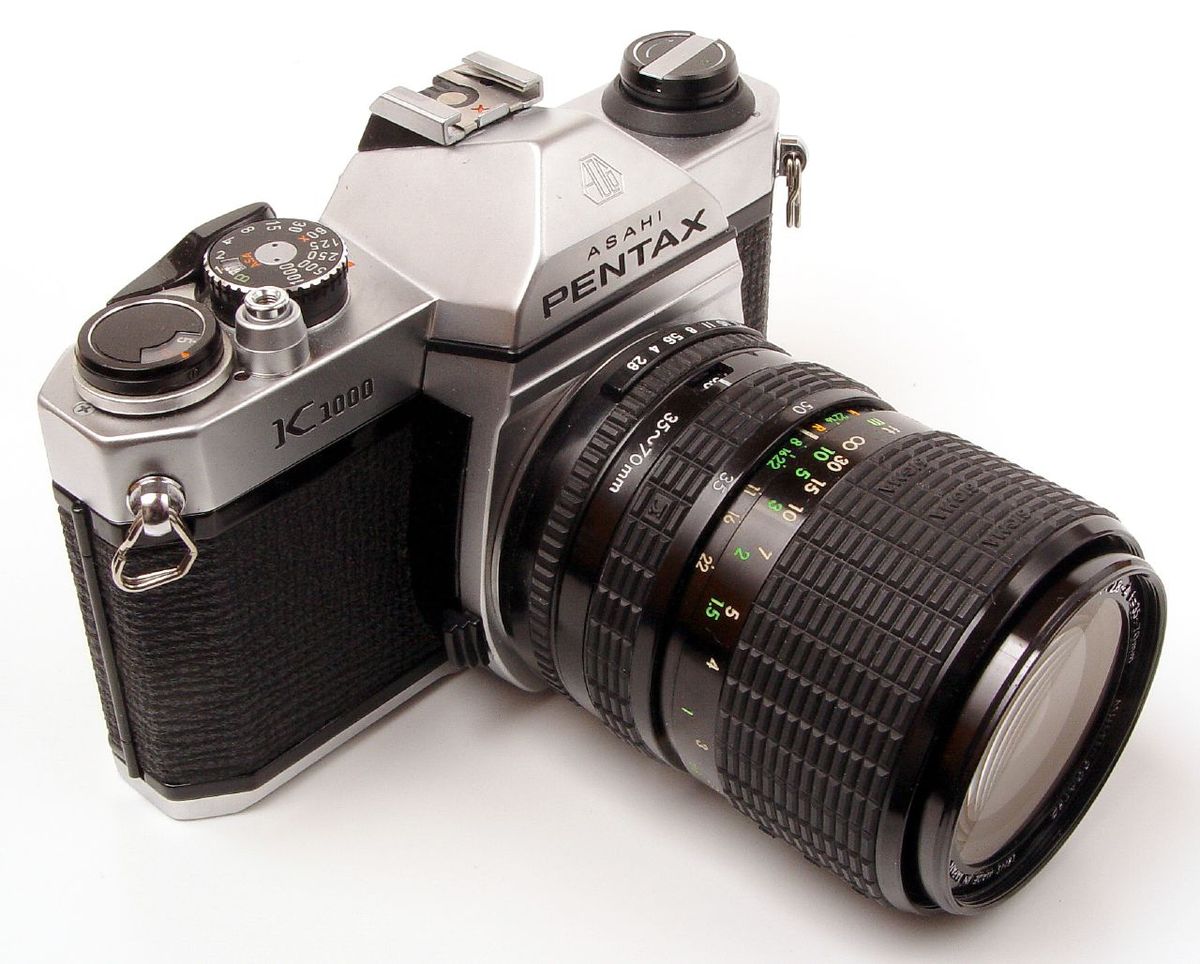
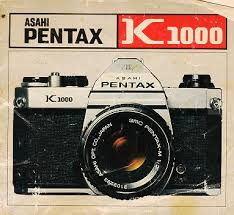
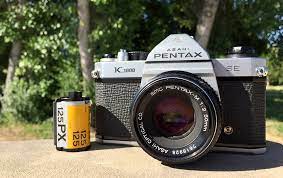
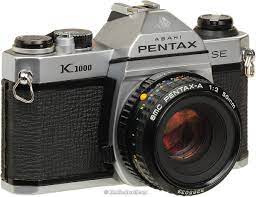
![Nikon 28Ti | Guide + For Sale In Mint Condition [Best Deals]](https://photo.adrianhallberg.com/wp-content/uploads/2022/12/s-l1200-8-300x300.jpg)
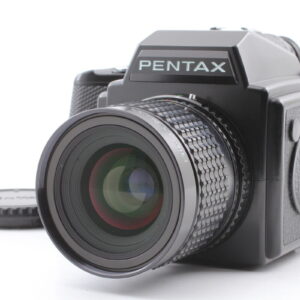
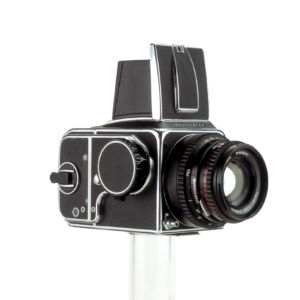
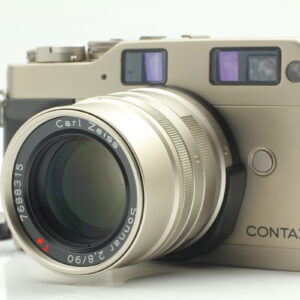
Reviews
There are no reviews yet.